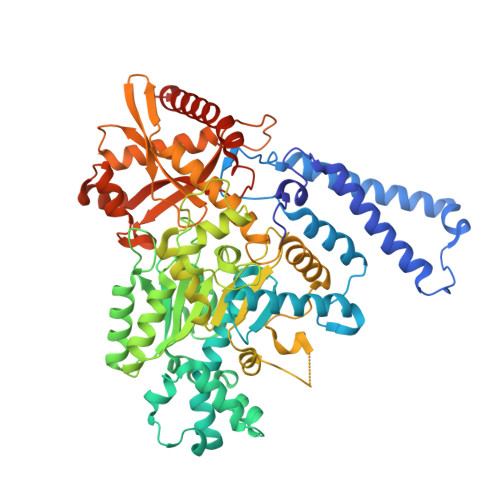Crystal structure of tyrosine decarboxylase and identification of key residues involved in conformational swing and substrate binding
Zhu, H., Xu, G., Zhang, K., Kong, X., Han, R., Zhou, J., Ni, Y.(2016) Sci Rep 6: 27779-27779
- PubMed: 27292129
- DOI: https://doi.org/10.1038/srep27779
- Primary Citation of Related Structures:
5HSI, 5HSJ - PubMed Abstract:
Tyrosine decarboxylase (TDC) is a pyridoxal 5-phosphate (PLP)-dependent enzyme and is mainly responsible for the synthesis of tyramine, an important biogenic amine. In this study, the crystal structures of the apo and holo forms of Lactobacillus brevis TDC (LbTDC) were determined. The LbTDC displays only 25% sequence identity with the only reported TDC structure. Site-directed mutagenesis of the conformationally flexible sites and catalytic center was performed to investigate the potential catalytic mechanism. It was found that H241 in the active site plays an important role in PLP binding because it has different conformations in the apo and holo structures of LbTDC. After binding to PLP, H241 rotated to the position adjacent to the PLP pyridine ring. Alanine scanning mutagenesis revealed several crucial regions that determine the substrate specificity and catalytic activity. Among the mutants, the S586A variant displayed increased catalytic efficiency and substrate affinity, which is attributed to decreased steric hindrance and increased hydrophobicity, as verified by the saturation mutagenesis at S586. Our results provide structural information about the residues important for the protein engineering of TDC to improve catalytic efficiency in the green manufacturing of tyramine.
Organizational Affiliation:
The Key Laboratory of Industrial Biotechnology, Ministry of Education, School of Biotechnology, Jiangnan University, Wuxi 214122, Jiangsu, People's Republic of China.















